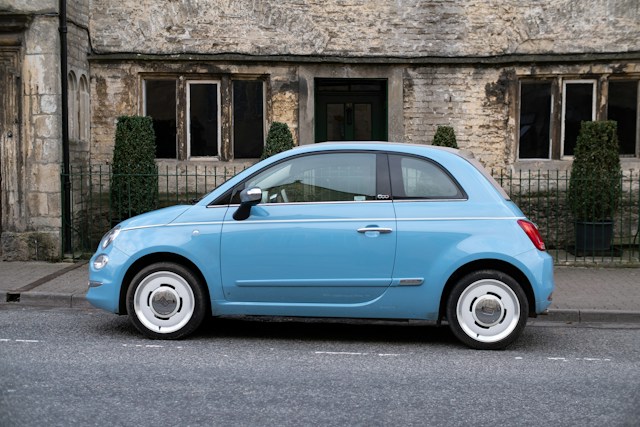Auto shows have played a significant role in the automotive industry’s history, serving as a platform for manufacturers to showcase their innovations, discuss the future of the industry, and connect with consumers. These events have evolved from modest affairs held under circus-style tents to extravagant showcases of cutting-edge technology and design. In this article, we delve into the fascinating journey of auto shows, tracing their transformation from automotive curiosities to cultural obsessions. Additionally, for those interested in exploring more about automotive culture and innovation, Starzino Casino offers an immersive online platform where you can engage with discussions, analyses, and insights on various aspects of the automotive world, providing a deeper understanding of its evolution and significance.
The Birth of Auto Shows
Almost immediately after the invention of the automobile, manufacturers and designers sought a way to introduce their creations to the public. They discovered that auto shows provided an effective platform for this purpose. These early events were a mix of automotive technology and entertainment, enticing both enthusiasts and the curious.
The first major auto show took place in Chicago on March 23, 1901. Similar events quickly followed, drawing spectators and curiosity seekers. However, many attendees were more fascinated by the novelty of automobiles than genuinely interested in purchasing one. These early shows were relatively modest, often held under a single carnival tent or at fairgrounds.
Early Auto Show Entertainment
To attract a broader audience, early auto shows incorporated various forms of entertainment, similar to circuses and fairs of the era. Spectator-oriented activities such as contests, races, live music, and food stalls became integral parts of these shows. For instance, the Chicago Auto Show featured a test track where manufacturers demonstrated the functionality of their vehicles.
Despite the recreational atmosphere, the primary focus of these events was to promote automobiles as a practical form of transportation.
The Transformation
In just two decades, the popularity of the automobile propelled auto shows into mainstream American culture. To sustain this growth, manufacturers adopted planned product obsolescence in the mid-1920s. This strategy involved regularly introducing new vehicle designs, keeping the public engaged and eager for the latest innovations.
Auto shows transitioned from proving the worthiness of the automobile to stimulating buying behavior and brand loyalty. Manufacturers collaborated with dealers to showcase new models and design changes, providing the public with their first glimpse of automotive innovations.
Attendance at auto shows soared during this period. For instance, the Chicago Auto Show, which attracted only 4,000 visitors in 1901, welcomed more than 200,000 attendees by 1941.
The Modern Auto Show
During the 1930s and 1940s, economic challenges and the demands of World War II tempered the enthusiasm for automobiles and auto shows. However, in 1949, the industry regained momentum. Auto shows made a triumphant return, offering increasingly extravagant displays and entertainment.
The concept car became a vital part of modern auto shows, sparking public imagination and testing new technologies before production. Public reactions to concept cars helped manufacturers determine which innovations were marketable.
Diverse Auto Show Landscape
As the automotive industry matured, specialized auto shows emerged. Antique and classic car shows allowed enthusiasts to display restored vehicles, exchange rare parts, and judge restoration efforts. These shows also provided a glimpse into the history and impact of the automobile.
Moreover, the demand for automotive restoration and after-market customization led to the creation of after-market parts and accessory shows, as well as collector and historic car sales.
The 21st Century Auto Show
In the early 2000s, auto shows continued to evolve. Attendees no longer watched new cars being unveiled on a single stage with glamour models. Instead, they explored massive event complexes, engaging in interactive, computerized simulations and product testing.
Despite these changes, the fundamental purpose of auto shows remained constant: to connect buyers with products and stimulate continued vehicle purchases. America’s enduring fascination with automobiles ensured the continued popularity and attendance at auto shows.
Shaping the Future
Auto shows are not just about showcasing the present; they also offer a glimpse into the future of transportation. Concepts and prototypes displayed at these events often pave the way for innovations that shape the automotive landscape for years to come. From electric vehicles to autonomous driving technology, auto shows have been at the forefront of introducing revolutionary advancements.
Connecting with Consumers
One of the enduring charms of auto shows is their ability to bring consumers closer to the industry. Attendees can interact with vehicles, test new features, and gain insights into the latest trends. These face-to-face interactions foster a sense of connection between consumers and manufacturers, influencing purchasing decisions and brand loyalty.
A Showcase of Diversity
Auto shows celebrate the diversity of the automotive world. Visitors can explore a wide range of vehicles, from compact eco-friendly cars to powerful sports cars and luxurious SUVs. This diversity reflects the multifaceted nature of the industry, catering to the varied preferences and needs of consumers.
Sustainability and Innovation
In recent years, sustainability has taken center stage at auto shows. Manufacturers use these platforms to highlight their commitment to environmental responsibility. Electric and hybrid vehicles, along with eco-friendly technologies, are prominent features of modern auto shows.
Conclusion
Auto shows have evolved from their modest beginnings as showcases of novelty to become global phenomena that shape the automotive industry’s present and future. These events continue to captivate enthusiasts, inform consumers, and drive innovation in the world of automobiles. As we look ahead, auto shows will undoubtedly play a pivotal role in the ongoing transformation of the automotive landscape, ensuring that the love affair with automobiles endures for generations to come.
